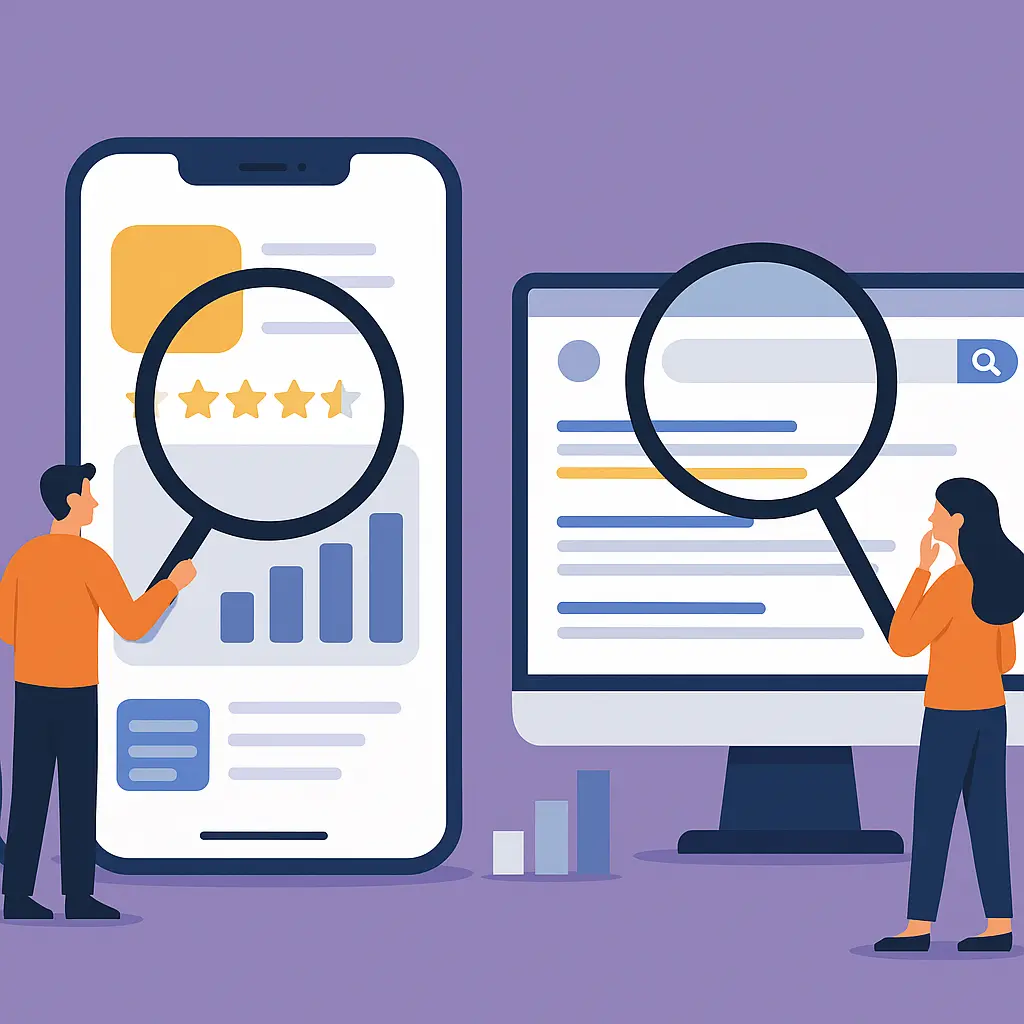Why Your App Isn’t Ranking – and What to Do About It
If you’re used to SEO, App Store Optimization (ASO) might feel familiar. Keywords, rankings, visibility, click-through rates – the language is the same. But here’s the catch:
ASO isn’t SEO.
And treating it like SEO is one of the biggest mistakes app owners, marketers, and developers make.
At Buzz Dealer, we’ve helped brands increase downloads, improve discoverability, and turn stagnant app performance around – not by repurposing SEO tactics, but by understanding how the App Store and Google Play algorithms actually work.
So let’s break it down. Here’s how ASO really works, how it differs from traditional SEO, and what you can do to start ranking inside the app stores – not just on Google.
What Is ASO, Really?
App Store Optimization is the process of improving your app’s visibility within app marketplaces like the Apple App Store and Google Play – and increasing conversion once users find it.
Sounds simple. But there are two sides to ASO:
- Discovery optimization – getting your app found in search or browse categories
- Conversion optimization – getting users to click, trust, and download
Miss either one, and your rankings won’t move – no matter how many updates you push.
ASO vs SEO: Key Differences You Need to Know
🔍 1. Search Mechanics Are Different
In SEO, search engines crawl your entire site. In ASO, you’re working within character-limited fields (title, subtitle, keywords, description). You have less real estate – and no backlink authority.
In SEO, links = power.
In ASO, installs, velocity, and reviews = power.
⚡ 2. Ranking Factors Are Heavily Behavior-Based
Google values content depth, crawlability, and page speed.
The App Store and Google Play care about:
- Download volume & growth rate
- User retention
- Ratings & reviews
- Keyword relevance
- Crash rate / performance
Your app could be perfectly optimized with keywords – but if it’s buggy or users uninstall it quickly, you won’t rank.
🛠 3. You Can’t “Content” Your Way to the Top
In SEO, publishing more content helps. In ASO, you don’t have that option. You’re working with limited copy fields – so every word must count.
In the App Store, your title, subtitle, and keyword field (which is invisible to users) are your main ranking levers.
How the App Store Algorithm Really Works (Apple vs Google)
Apple App Store (iOS):
- Focuses heavily on keyword metadata
- Title and subtitle are weighted heavily
- Uses a hidden keyword field (100 characters max)
- Relies on volume and velocity of installs
- Algorithm is less transparent but more stable
Google Play Store (Android):
- Works more like traditional Google Search
- Indexes full description, including keywords
- Also uses backlinks to the Play Store page
- More responsive to on-page keyword usage
- Allows A/B testing for assets (via Google Play Console)
What Actually Moves the Needle in ASO
✅ 1. Keyword Optimization
Use relevant, mid-volume keywords in:
- App name/title
- Subtitle or short description
- Keyword field (iOS) or full description (Android)
Tools to use: AppTweak, MobileAction, SensorTower, or Google Keyword Planner for Android relevance.
✅ 2. Conversion Assets
Your icon, screenshots, and preview video directly impact install rate – and Google/Apple use conversion performance to influence rankings.
Best practices:
- A/B test creative assets regularly
- Use captions in screenshots to highlight benefits
- Preview video = optional, but can boost conversion by 20–30%
✅ 3. Reviews and Ratings
Apps with higher ratings rank higher – especially if reviews come in consistently.
Quick wins:
- Use in-app prompts (after key actions) to request ratings
- Respond to negative reviews to show engagement
- Fix bugs fast – crash rate affects rank
✅ 4. Install Velocity
The rate of installs over time matters more than lifetime download count.
What helps:
- Paid UA (User Acquisition) campaigns
- Influencer-driven bursts
- Launching with PR & community buzz
Sustained growth > one-time spikes.
Bonus: How Buzz Dealer Approaches ASO Differently
At Buzz Dealer, we treat ASO as part of a broader visibility strategy, not a siloed checklist.
Our approach blends:
- On-metadata optimization (keyword research, copywriting, localization)
- Creative testing (designing assets that convert)
- Reputation reinforcement (review management, PR visibility)
- Search ecosystem alignment (so you rank in Google and the app store)
Because let’s face it – your app store page isn’t the only place people search for you.
Final Thought: ASO Isn’t Just SEO With Fewer Pages
App Store Optimization is its own discipline – with its own rules, challenges, and ranking dynamics.
If your app isn’t getting discovered, or you’re stuck in download purgatory, the solution isn’t more blog posts. It’s better ASO strategy, smarter visibility tactics, and full-funnel optimization.
Want to improve your app store rankings and turn views into downloads?
Get in touch – Buzz Dealer helps brands connect the dots between app visibility, trust, and performance.

